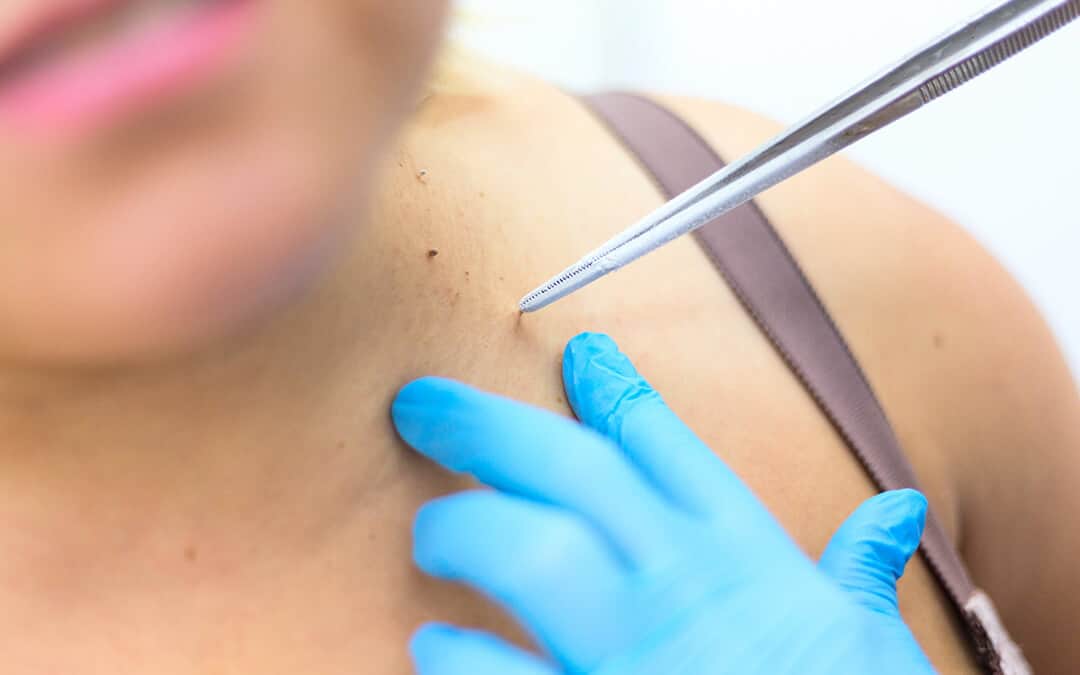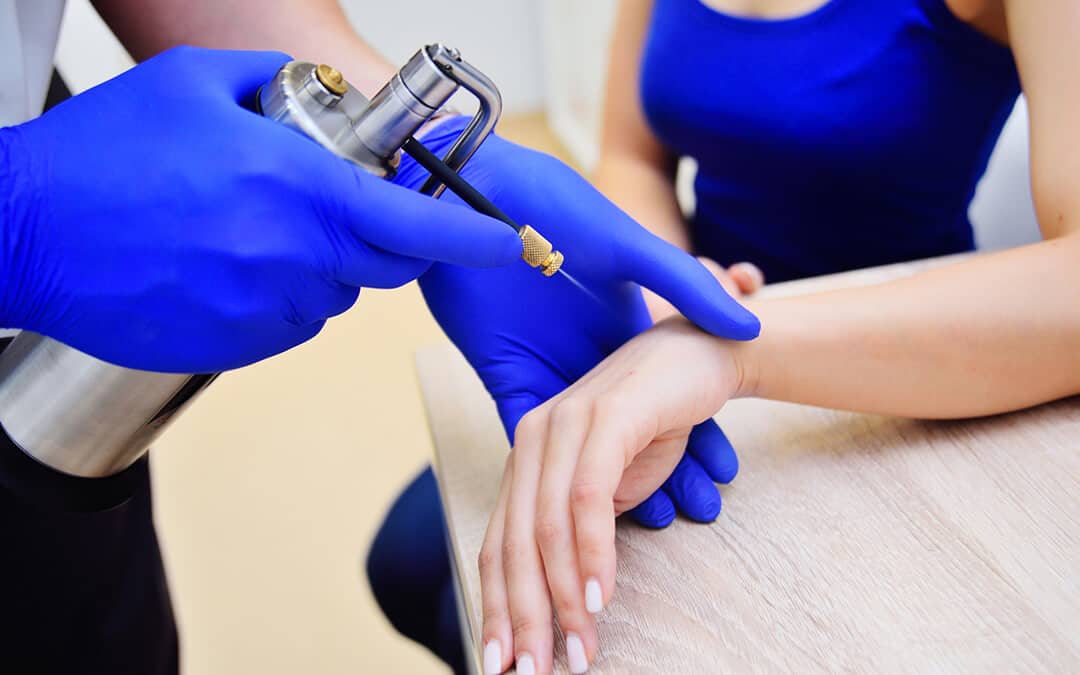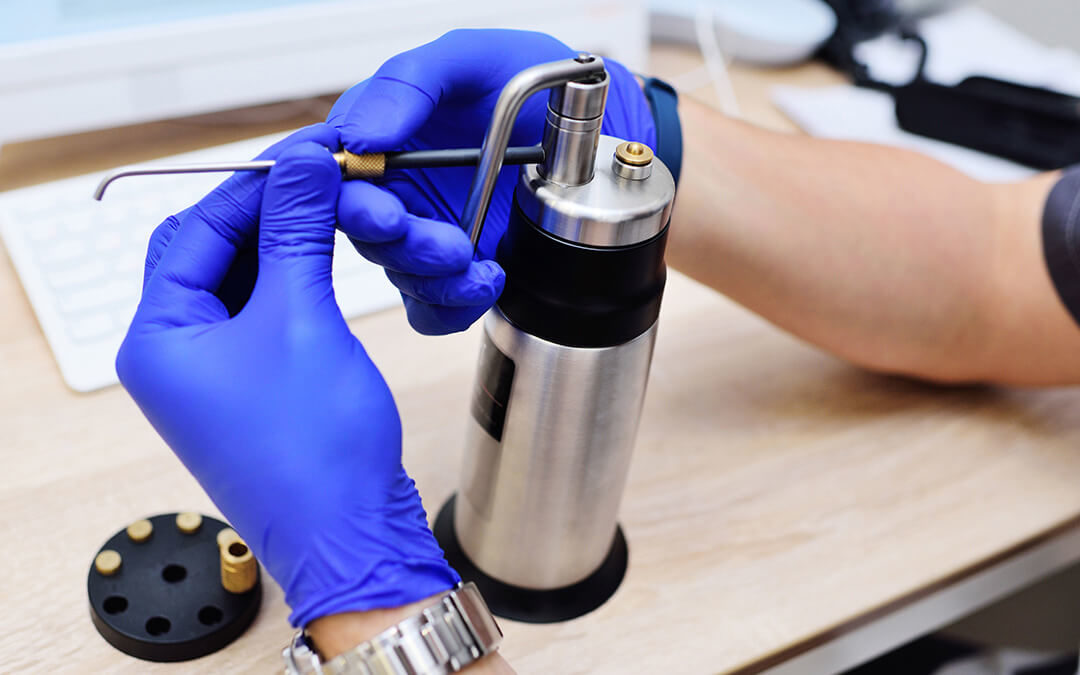Cryosurgery, or cryotherapy, is the application of extreme cold to destroy diseased or unwanted tissue. The cold is applied with cryogens such as argon, carbon dioxide, and, most commonly, liquid nitrogen. Rapid freezing kills the targeted cells, while anesthetically numbing the surrounding healthy tissue.
With application in the medical, dental, and veterinary fields, cryosurgery is a safe and cost-effective method of removing warts, skin tags, acne, dark spots, and other blemishes on the skin – including precancerous lesions.
Cryotherapy treatments involving water ice, liquid air, and solid carbon dioxide (dry ice) have been used in various forms of medical practice since the 19th century. In the 1960s, the use of liquid nitrogen in cryosurgery was developed as a means to destroy brain tumors. Since then, liquid nitrogen cryosurgery practices have expanded to treat gynecologic and urologic tumors, hemorrhoids, and cataracts – along with certain types of cancer, including skin, bone, lung, liver, prostate, and cervical.

Cryosurgery Is Minimally Invasive
The word “surgery” brings to mind thoughts of cutting and incision. Most cryosurgery treatments do not involve cutting. Liquid nitrogen has a temperature of -320°F (-196°C). When the extreme cold of liquid nitrogen is applied to abnormal tissue, the cells freeze and die. Localized liquid nitrogen destroys diseased tissue and removes unwanted skin growths with minimal (if any) discomfort, bleeding, or scarring. Recovery is generally quick, and post-procedural discomfort can be treated with a mild analgesic.
As a safe, lower-cost alternative to traditional surgery, cryosurgery (also known as cryoablation) is typically minimally invasive. Depending on the location of the abnormal tissue, liquid nitrogen is applied directly to the skin via a spray or a dipped swab. Warts, for example, are commonly removed by application of a liquid nitrogen spray.
Internal cryosurgery procedures are performed with a cryoprobe, a ducted metal cryosurgical probe filled with liquid nitrogen. Doctors use imaging equipment to guide the direction of the cryoprobe, to target specific internal areas without damaging the surrounding healthy tissue. When the cryoprobe is applied to a lesion, the tissue is frozen rapidly, its cells killed on contact. Any tumor or abnormal tissue that can be reached with a cryoprobe may be removable with cryosurgery.

An Alternative To Traditional Surgery
In addition to cell destruction, the rapid cooling of cryotherapy acts to temporarily numb the sensory nerves surrounding the targeted tissue, helping to reduce patient pain and discomfort. From the doctor’s office to the dental chair, the anesthetic properties of cryosurgery make it a safe alternative to conventional surgery involving the use of a general anesthetic.
In veterinary practice, general anesthesia can pose a health risk for older animals. Because of cryosurgery’s naturally anesthetizing (numbing) properties, it can be an effective alternative treatment for removing unwanted or diseased tissue from hard-to-reach areas – such as within the animal’s mouth – when general anesthesia is not an option. And, due to its analgesic properties, cryosurgery is beneficial for removing lesions from areas subject to post-procedural licking, biting, and scratching.
As with any surgery, there are risks involved with cryosurgery. Compared to other tissue-removal treatments, however, such as radiation and traditional surgery, cryotherapy procedures are generally safe (and predictable). The main risk involved with targeted cell destruction by cryogen is the potential for damage to surrounding healthy tissue. And, because cryosurgery involves the destruction (and subsequent removal) of potentially malignant tissue, it’s not recommended for cases where post-removal biopsy work is needed.
By freezing and destroying problematic and abnormal tissues, both internally and externally, cryotherapy has wide application across medical, dental, and veterinary fields. Contact CalOx to learn more about our medical-grade liquid nitrogen delivery services.
